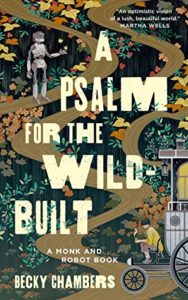 Title: The Lamb Will Slaughter the Lion
Title: The Lamb Will Slaughter the Lion
Author: Margaret Killjoy
Publisher: Tor Books
Publication Date: August 15, 2017
Genres: Fantasy, Horror, Paranormal, LGBTQ, Contemporary
Length: 120 pages
Source: I borrowed it from the library.
Rating: 3 Stars
Blurb:
The Lamb Will Slaughter the Lion by Margaret Killjoy pits utopian anarchists against rogue demon deer in this dropkick-in-the-mouth punk fantasy that Alan Moore calls “scary and energetic.”
Searching for clues about her best friend’s mysterious suicide, Danielle ventures to the squatter, utopian town of Freedom, Iowa, and witnesses a protector spirit — in the form of a blood-red, three-antlered deer — begin to turn on its summoners. She and her new friends have to act fast if they’re going to save the town — or get out alive.
Content Warning: Brief reference to a previous suicide and a death by drug overdose. Dead and dying animals (livestock and wild animals, not pets). Blood. A demon. Murder.
Review:
Good intentions aren’t everything.
Some of the most memorable scenes to me were the ones that described how the residents of Freedom lived their lives. They were squatters who had banded together to create an ecologically-friendly commune where nothing was wasted and everyone’s basic needs were met thanks to a combination of gardening, gathering wild plants, visiting food banks, dumpster diving, and occasionally dipping into less legal forms of procuring food and supplies. Honestly, I would have read another hundred pages that described how their community worked and how they dealt with members who took more than they gave.
I struggled with the plot holes, especially the ones that protected Danielle and the other protagonists even when they were playing around with dangerous ideas that had gotten other characters killed off. Of course I wanted them to live happily ever after, but by protecting them from things the plot had repeatedly hammered home were terrible choices to make it watered down the message of it and left this reader feeling confused.
It was cool to realize how many of the characters in this tale were part of the LGBTQ+ community in part because of how it inverted the assumption that most characters should be cisgendered and heterosexual with only the occasional side character who breaks that rule. Representation is important, and I loved the fact that the characters identities were shared in ways that didn’t make a big deal out of any of them and quickly moved on to furthering the plot. That, too, makes a difference to those of us who are not cisgendered heterosexuals. Not everything needs to be announced with bells and whistles. Sometimes we just exist and go about our normal lives…albeit hopefully without seeing any supernatural deer causing havoc in the real world.
The themes in this novella were interesting but undeveloped. There was so much more the author could have done with ideas like the corruptive side effects of having power over others and how people who seek out positions that give them more power over others should be viewed with suspicion. I didn’t always agree with their thoughts on those topics, but I was intrigued and wanted to learn much more than I did about why the narrator – and maybe the author, too – feels this way.
After reading the last few pages, I wondered where this new series is going next. While I can’t go into a lot of detail about those scenes for spoiler reasons, there was obviously time spent setting up the characters for what was to come for them. While I thought some of the directions the end was hinting at didn’t mesh well with the themes that had been already established, I’m very open to being proven wrong about that. You never know what twists and turns might be ahead for a character, so it will be interesting to see what the author has up their sleeves.
The Lamb Will Slaughter the Lion was creepy.

 Title: A Prayer for the Crown-Shy
Title: A Prayer for the Crown-Shy Title: A Psalm for the Wild-Built (Monk & Robot #1)
Title: A Psalm for the Wild-Built (Monk & Robot #1) Title: Remote Control
Title: Remote Control Title: Everfair
Title: Everfair